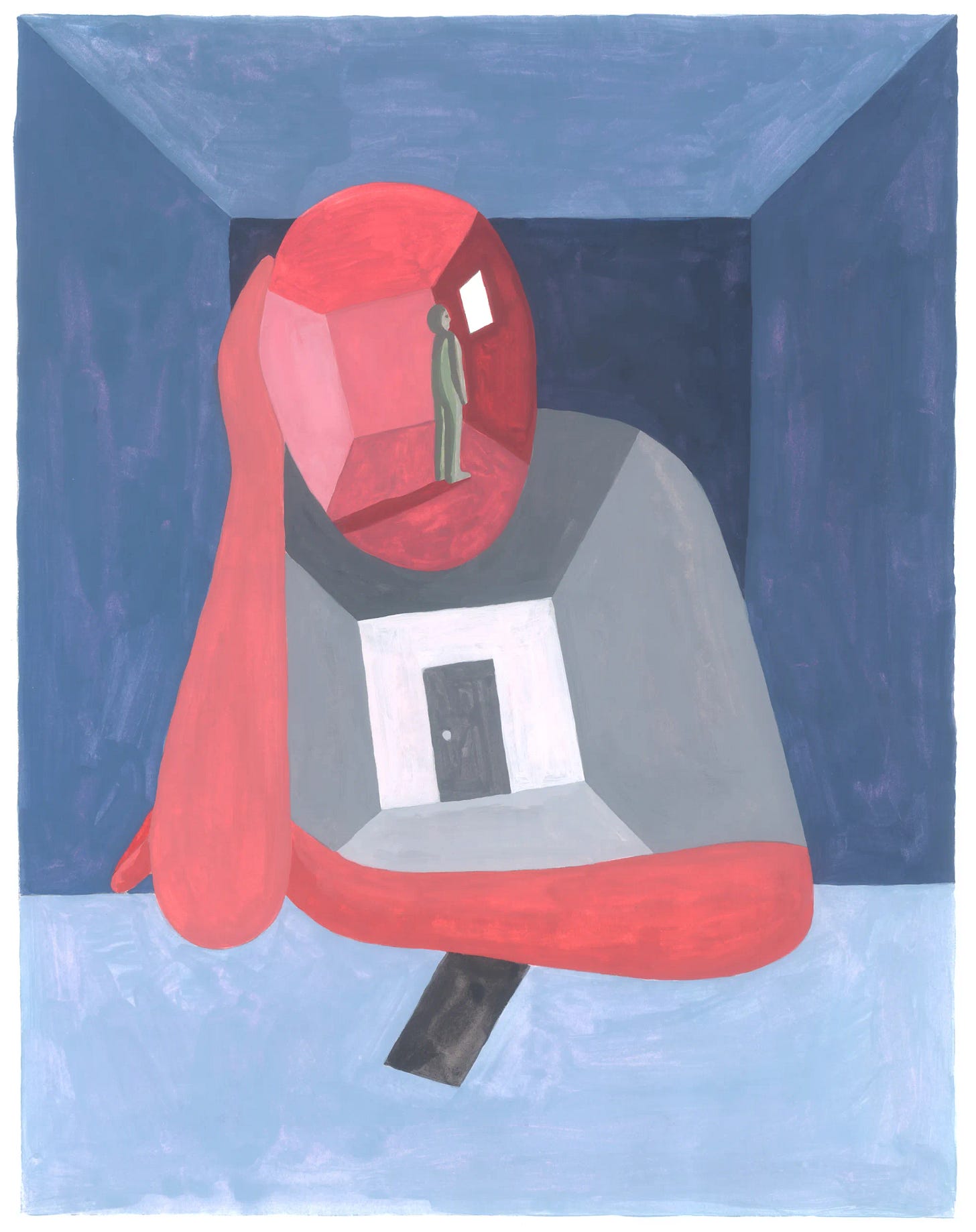Last year, I did a month of severely limited tech with a few friends. No TV, podcasts, music, social media, Googling, YouTubing, etc etc. The whole shebang.
It felt like a considerable deviation from normal life.
Silent car rides.
Phone-less coffee queues.
Analog evenings.
And it was bloody refreshing, though not always easy. At times I’d open my email, or the weather app, or system settings (!) just to get that next hit of dopamine and escape the very subtle discomfort of non-stimulation that the real world presents us with.
Isn’t that bizarre?
That just being—just sitting on a tram or waiting for a friend to arrive at the restaurant—can be too bland an experience to endure without additional stimulation.
Any sense of discomfort (boredom included) can now be alleviated by scrolling.
And in times when we must use our hands for mundane tasks, there are music and podcasts, too—while we cook, eat, commute, exercise, shower…
With smartphones, we now have the possibility of literally never being without stimulation.
Yikes!
But don’t worry, I’m not here to convince you to spend less time on your phone. You probably already feel the consequences, and you probably already desire some change.
Instead, I want to explore how intentionally spending time unstimulated can support how we respond to psychological discomfort.
In my last post, I spoke about an Eastern view of psychological suffering—that at a mechanistic level, any sense of discomfort is the result of craving—i.e., of wanting things to be other than they are.
Boredom, or the discomfort associated with being without stimulation, is an example of craving in action. The present moment is seen as inadequate, and there comes a desire for change.
Recognising this, we can therefore attempt to practice the act of non-resistance deliberately.
This can be a liberating action in and of itself, but more importantly, it is a way of consciously practising a skill that we can use in our daily lives when faced with challenges.
Below, I’ll introduce a very simple practice, if you could even call it that.
The practice is to do nothing.
Find a place to be for a specific amount of time.
Don’t do ANYTHING.
Do not intentionally engage with thoughts.
Allow discomfort.
That’s it.
Let’s unpack it a little further.
Step one is to find a space. This could be sitting on your bed, or a chair, or a tram. It does not have to be a special posture - just get comfortable. Eyes open or closed.
If you can be completely alone, in silence, then that’s a bonus.
Put a timer on. Start with whatever length doesn’t intimidate you. If that’s 20 minutes, great, if it’s 1 minute, no problem.
Step two is fun. Don’t do anything.
Don’t ‘try and meditate’. Don’t sing. Don’t cut your fingernails. Don’t uncrease your bed. Don’t stretch. Don’t do breathing exercises. Don’t look around your room. Don’t read the care instructions on your jeans.
Literally, do nothing.
This is hilariously difficult.
You might find that your mind gravitates towards doing in some way, and that’s fine, just don’t intentionally continue with that doing once you’ve noticed it.
Don’t fall asleep either. So lying down with eyes closed probably isn’t the best idea.
Step three is not to intentionally engage with thoughts.
If you’ve ever been exposed to introspective practices before, you’ll have recognised how wild the mind can be. It’s not simply a matter of turning off thinking. Thinking is fine. Thinking just happens.
But in this exercise, if you become aware that you’re engaged in a thought process (whether planning, reflecting, or just random nonsense), just let go of intentionally engaging with that thought process, and return to doing nothing.
This might happen 400 times, no problem, no judgement, just keep coming back to nothing.
Worth emphasising again, we are not trying to stop thinking, we are just letting go of intentional engagement with thought. Keyword: intentional.
The end result is you should be sitting there looking like an uninspired zombie.
If someone walked into the room, they should be seriously concerned for your well-being.
The final instruction here is to begin to allow discomfort.
This is the essence of the practice.
Craving will arise (likely in the form of boredom or restlessness), felt as some experience of unease or pressure. It will be felt in the body, too, if you pay attention.
It may be subtle or it may be extremely uncomfortable.
If you aren’t sure whether craving is present, you might ask yourself the question:
“Am I wanting this moment to be any different than it is?”
Whether you want the practice to be less distracted, more interesting, more pleasant, more relaxed, more exciting, more psychedelic, more calm, or just for it to be over—that is all wanting something to be different.
The practice is to then accept, allow, and welcome, that experience of craving.
To not resist whatever discomfort arises.
Not in some David Goggins-style masochistic way, but as a way of non-resistance to whatever is happening.
And if everything’s just fine and dandy, just sit with that, too. Without any clinging onto that as an experience. Without any desire to deepen the dandy-ness.
A little caveat: for some, this practice might be too overwhelming as a starting point. If it induces feelings of panic or strong dissociation, for example, it might be best to step back for now and work on regulating your nervous system first (e.g., diaphragmatic breathing exercises).
With time, you’ll find that if you lean into any discomfort, if you really, genuinely accept the experience as it is, the very experience of discomfort will change.
Of course, if you’re only accepting the discomfort to get rid of it, well then, you aren’t really accepting it—so watch for the mind’s trickery here, too.
If this attitudinal posture of acceptance feels difficult to engage, you might mentally use the words, ‘allow’, or ‘welcome’.
You might also relax any tension in the face or body, as this will have a similar effect. Get creative if you need to, but the intent is to welcome any discomfort.
To welcome the fullness of whatever is in awareness, pleasant or unpleasant.
That’s it.
There’s no real end goal here. We aren’t trying to reach some special state of quiet or bliss or psychedelia. No expectations. Just sitting with what is.
A powerfully simple practice that is at the heart of so many Eastern spiritual traditions, and is likewise recognised in mainstream Western psychology.
It is no-frills Buddhism.
It is barebones Acceptance and Commitment Therapy.
Deep spiritual and/or psychological exploration and self-care can be as simple as this.
And the beauty of such a practice is that if ANY part of it is challenging, then that challenge becomes grist for the mill; becomes another part of experience to allow, accept, and welcome.
So, get off your phone and start doing nothing.
With love,
Jerome
Also, I just found a new favourite genre—meditative sludge:



